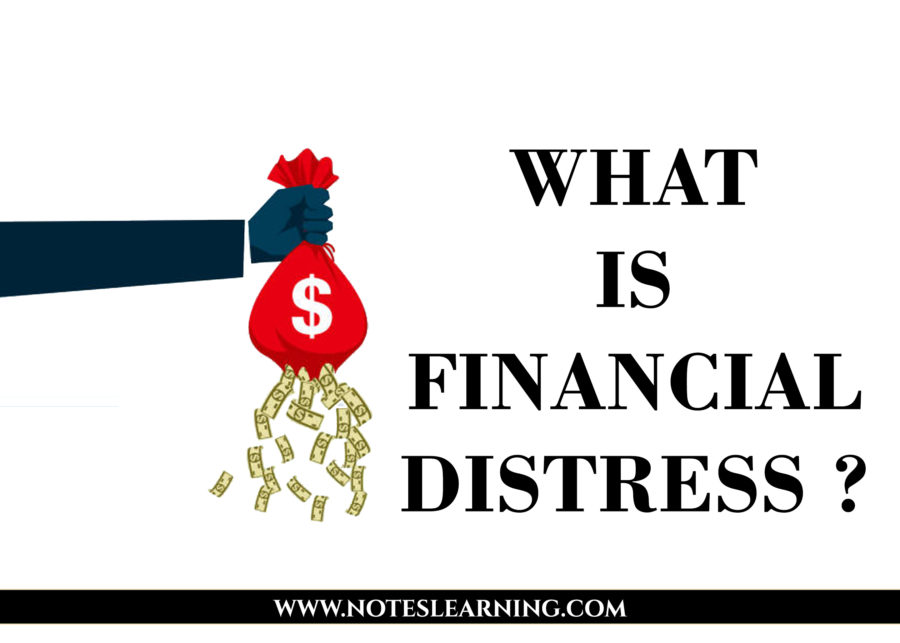Introduction
Financial distress is a condition in which a company or individual cannot generate revenue or income because it is unable to meet or cannot pay its financial obligations. This is generally due to high fixed costs, less-liquid assets, or revenues sensitive to economic downturns.
Looking at a company’s financial statement can help investors and others determine its financial health.
- Negative cash flow under the cash flow statements is one indicator of financial distress.
- Poor profits may indicate a company is financially unhealthy.
- Struggling to break even indicates a business cannot sustain itself from internal funds and needs to raise capital externally. This raises the company’s business risk and lowers its creditworthiness with lenders, suppliers, investors, and banks. Limiting access to funds typically results in a company (or individual) failing.
- Poor sales growth or decline indicates the market is not positively receiving a company’s products or services based on its business model. When extreme marketing activities result in no growth, the market may not be satisfied with the offerings, and the company may close down.
- When debtors take too much time paying their debts to the company, cash flow may be severely stretched. The business or individual may be unable to pay its own liabilities. The risk is especially enhanced when a company has one or two major customers.
Financial distress is a situation, which makes the company’s survival difficult. A firm, which is exposed to higher business risk, faces a greater chance of financial distress. A firm experiences financial distress when it defaults the external obligations. Though a levered firm has the tax advantage, a highly levered firm is always under the threat of distress because of the high cost of debt. A firm in distress condition reduces the value of the firm because:
Value of the firm = Value of equity finance + PV of tax shield – PV of cost of financial distress
Causes of Financial Distress
A company moves to distress due to a number of reasons. Broadly these reasons can be classified into internal causes and external causes.
Internal Causes
- Managerial in-competencies
- Heavy debt burden
- Lack of financial discipline
- Uneconomic plant size
- Over investments in fixed assets
- Unsuitable plant and machinery
- Weak demand projection
- Irrational price structure
- Inadequate sales promotion
- High distribution cost
- Poor customer service
- Wrong capital structure
- Wrong investment decisions
- Lack of financial policies
- Weak budgetary control
- Absence of responsibility accounting
- Inadequate management information system
- Poor management of receivables
- Bad cash planning and control
- Improper tax planning
- Ineffective leadership
- Poor labor relations
- Inadequate human resources
- Over staffing
- Lack of commitment on the part of employees
- Irrational compensation structure
- Lack of expenditure control system
- Excessive borrowings
- Deteriorating quality
External Causes
The external environment may also affect the operations of a company adversely. Some of the major issues, which are generated by the external environment, are:
- Government policies regarding taxation, power tariff, power supply, customs duties and import duties, restrictions on imports and exports etc.
- Quota system imposed by the government on raw materials/ finished goods
- Entry of large number of firms thereby sudden increase in the capacity
- Development of new technology
- Sudden withdrawal by some of the major customers resulting into decline in orders
- A change in the consumers’ tastes and preferences
- Strained relationship with the external government
- A change in the lending policies of the financial institutions
Symptoms of Distress
The financial distress is not developed overnight. Distress is the culmination of various factors. The symptoms of distress are visible in an organization when the unit shows incipient sickness. Some of these symptoms are:
- Declining sales revenue coupled with a large number of rejections of consignments by the customers.
- Delayed payment to suppliers resulting into withdrawal of credit facilities by them
- High leverage because of over borrowings
- Continuous overdrawing of the credit limits sanctioned by banks resulting into suspension/withdrawal of facilities by banks
- Default in repayment of interest and principal to financial institutions, bondholders etc.
- Declining capacity utilization
- Lack of proper maintenance of plant, machinery and equipment
- Poor asset turnover
- Large accumulation of inventories
- Suppliers showing reluctance to offer trade discounts
- High labor turnover
- Extension of accounting period
- Value erosion in respect of shares and debentures
- Declining market reputation
- Default in payment of statutory dues
References Investopedia

